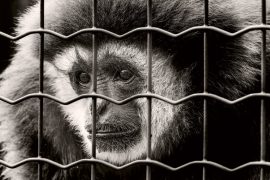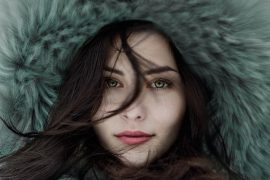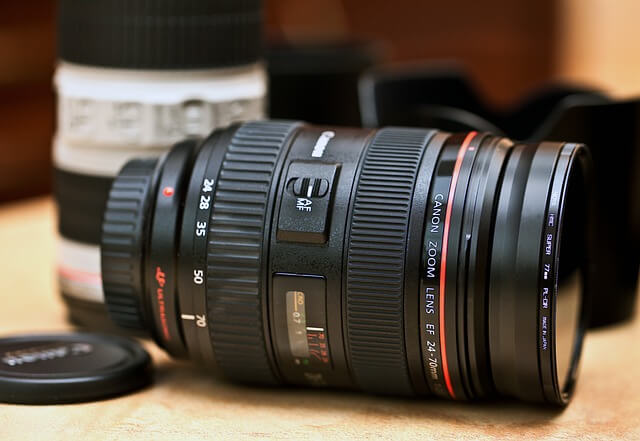Canon has announced its new EOS R8 mirrorless hybrid cameras. The EOS R8 is being targeted as an entry-level full-frame camera for content creators and YouTubers. The Canon EOS R8 Mirrorless Camera offers powerful photo and video capabilities for both photographers and multimedia content creators.
The R8 features a 24.2MP CMOS sensor paired with a DIGIC X processor. Together, this combination provides outstanding stills performance, impressive 4K 60p 10-bit video, and fast autofocus.
The EOS R8 looks to represent very good value for money given its feature set and specifications. In a lot of respects, it is a mini EOS R6 Mark II at the same price point as the EOS R7.
The Canon EOS R8 has a lot in common with the EOS R6 Mark II, it features a 24.2MP Full-Frame CMOS Sensor and it looks to be the exact same sensor that is used in the EOS R6 Mark II.
It features the same 3.0″ 1.62m-Dot Vari-Angle Touchscreen and Dual Pixel CMOS AF II system. It also shares the same DIGIC X Processor that is found in the R3 and R6 Mark II. This processor is capable of processing high-speed bursts as well as high-res 4K video.
Canon EOS R8 Highlights
- 2MP Full-Frame CMOS Sensor
- 4K60p 10-Bit Internal Video, Canon Log 3
- 36m-Dot OLED Electronic Viewfinder
- 0″ 1.62m-Dot Vari-Angle Touchscreen
- Dual Pixel CMOS AF II
- 40 fps Electronic Shutter
- Movie Digital IS
- Vertical Movie Mode
- Microphone Input, Headphone Output
- Multi-Function Shoe, Wi-Fi & Bluetooth
Canon EOS R8 Overview
-
Weight & Size
The EOS R8 weighs approx. 461g / 16.26 oz (with card and battery), this makes it Canon’s lightest full-frame EOS R System camera to date. The camera has physical dimensions of 132.5 x 86.1 x 70mm which makes it very similar in size to the EOS RP.

-
Ergonomic Operability & Interfaces
The Canon R8 is designed for those who take photos and videos, and the layout of the buttons and switches has been redesigned. In addition, a dedicated lever for quickly switching between photo and video modes has been added, allowing you to do so without using the mode dial.

With such a huge library of features and settings within the camera menu, the EOS R8 makes it easy for new users to understand the various features with its visual guides. The shooting mode guide provides a brief description of the selected mode as well as an example image. The feature guide displays a brief description of the screen’s functions and settings.
In addition to being dust- and water-resistant, the EOS R8’s chassis is constructed primarily with magnesium alloy to withstand the elements. Numerous sealing and high-precision components are incorporated into the camera to prevent dust and water droplets from entering.
-
Still Image Quality
The EOS R8’s 24.2-megapixel full-frame CMOS sensor coupled with the latest DIGIC X image processor, allows you to get high-quality images with lesser noise. With a low light sensitivity that goes up to EV -6.5 and an ISO that goes up to 102 400, you can capture stunning images even when working in difficult lighting conditions.
General spec
| Lens Mount | Canon RF |
|---|---|
| Sensor Resolution | Effective: 24.2 Megapixel |
| Sensor Type | 35.9 x 23.9 mm (Full-Frame) CMOS |
| Image Stabilization | Sensor-Shift, 5-Axis (Video Only) |
| Capture Type | Stills & Video |
With the new Moving Subject Priority HDR mode, you can get an HDR image with just one shot instead of the usual three, making it ideal for shooting subjects on the move.
Exposure spec
| Shutter Type | Electronic Shutter |
|---|---|
| Shutter Speed | Electronic Shutter |
| 1/16000 Up to 30 Seconds in Manual Mode | |
| 1/16000 Up to 30 Seconds in Time Mode | |
| 1/8000 Up to 30 Second | |
| Electronic Front Curtain Shutter | |
| 1/4000 Up to 30 Seconds | |
| Bulb/Time Mode | Bulb Mode, Time Mode |
| ISO Sensitivity | Photo/Video |
| 100 to 102,400 (Extended: 50 to 204,800) | |
| Metering Method | Center-Weighted Average, Evaluative, Partial, Spot |
| Exposure Modes | Aperture Priority, Manual, Program, Shutter Priority |
| Exposure Compensation | -3 to +3 EV (1/3, 1/2 EV Steps) |
| Metering Range | -3 to 20 EV |
| White Balance | Presets: Auto, Cloudy, Custom, Daylight, Flash, Fluorescent (White), Kelvin, Shade, Tungsten |
| Continuous Shooting | Electronic Shutter |
| Up to 40 fps for up to 120 Frames (JPEG) / 56 Frames (Raw) | |
| Up to 6 fps for up to 1000 Frames (JPEG) / 1000 Frames (Raw) | |
| Interval Recording | Yes |
| Self-Timer | 2/10-Second Delay |
With the Aspect Marker feature, you can create content that is tailor-made for your preferred social network. Visual indicators are visible based on the selected aspect ratio, making framing during shooting a breeze.
-
Autofocus & Image Stabilization
- Autofocus
The Autofocus spec is shown below:
| Focus Type | Auto and Manual Focus |
|---|---|
| Focus Mode | Continuous-Servo AF, Manual Focus, Single-Servo AF |
| Autofocus Points | Photo |
| Phase Detection: 4897 | |
| Video | |
| Phase Detection: 4067 | |
| Autofocus Sensitivity | -6.5 to +21 EV |
The Advanced Dual Pixel CMOS AF II system features 1053 automatic AF points that cover the entire sensor area and provide notably fast, responsive, and precise focusing performance.
Autofocus speeds as fast as 0.03s making it possible to focus in the blink of an eye. In addition to its high-precision AF/AE system, the EOS R8 can shoot at up to 40 frames/second in electronic shutter mode and 6 frames/second in mechanical shutter mode with AF/AE tracking enabled.
The 40 frames/second silent burst is useful in situations that require silence, such as live performances or wildlife photography.
The EOS iTR AF X (Intelligent Tracking & Recognition Autofocus) will automatically detect and track moving subjects. There are three types of tracking:
-
Human Detection:
The camera follows the eye, head, or body when the subject moves, changes positions or even when partially obscured. Additionally, you can choose which eye to track with the help of Left/Right Eye Priority Tracking on the EOS R8.

-
Animal Detection:
Focusing on animals is never easy, due to their unpredictable behavior. The Animal Priority AF eliminates this challenge and lets you focus solely on your creativity. Cats, dogs, birds, and horses can now be tracked under this mode.

-
Vehicle Detection:
If you’re trying to get clear shots in the fast world of motorsports, the Vehicle Priority AF will help you out by tracking the vehicle. Apart from cars and motorcycles, trains and planes are included as well.

-
Image Stabilization
An In-Body Image Stabilizer (IBIS) corrects up to 7 stops of unwanted camera shake when shooting handheld, helping to shoot handheld in low-light conditions and reduce shake when recording videos.
This 5-axis system can be also used in conjunction with lenses featuring optical image stabilization to compensate for up to 8 stops of camera shake depending on the specific lens in use. Additionally, Movie Digital IS uses optical and sensor-shift stabilization methods along with digital IS to help acquire steadier footage while moving.
-
Video Recording
Video spec
| Internal Recording Modes | H.264/H.265/MP4 4:2:2 10-Bit |
|---|---|
| UHD 4K (3840 x 2160) | |
| External Recording Modes | Non |
| Gamma Curve | Canon Log 3, HDR-PQ |
| Recording Limit | Up to 30 Minutes in 4K |
| Up to 30 Minutes in 1080p HFR | |
| Broadcast Output | NTSC/PAL |
| Built-In Microphone Type | Stereo |
The EOS R8 is able to record internally up to UHD 4K60 10-Bit in C-Log 3 just like the R6 II. A 6K recording area can also be used for oversampled 4K shooting at 30p for improved sharpness, reduced moiré, and lower noise. And, for slow-motion playback, 180p recording is supported at up to Full HD resolution. The camera also has the ability to use an APS-C crop mode when shooting in UHD 4K or HD.
Canon EOS R8 offers flexible 8-bit and YCbCr 4:2:2 10-bit options for casual content creators and professionals who need post-production color adjustments.
The Using of HDR PQ mode allows you to record HDR-compatible movies with high brightness, wide gradation, and wide color gamut without color grading, or simply use a Picture Style preset to simplify your workflow further.
Canon Log 3 can permit richer color expression, even in high-contrast scenes, if you prefer greater color control in post-production.
The maximum recording time when shooting in all resolutions apart from 120p and 180p in HD is listed as 2 hours. As far as overheating is concerned, there is an overheat control setting in the menu when shooting a video.
The False Colour feature determines the exposure level of the recording, this will enable you to make adjustments that will prevent underexposure or overexposure in your videos.

Zebra Patterns are displayed on areas where brightness meets and/or exceeds a pre-set level, letting you quickly spot any potential overexposure and make adjustments before highlights get clipped.

Because the camera’s angle of view changes slightly during focus racking while recording video, causing an annoying ‘pulsing’ effect in the footage. The EOS R8 corrects this automatically when a compatible lens is used, ensuring a smooth and natural result consistently.
The camera also has the ability to capture scenes from 3 or 5 seconds before recording. By simply shooting a still image, about 2 to 4 seconds immediately before shooting will be recorded as a movie at the same time as the still image is recorded. Please note that the video is recorded in Full HD 29.97/25.00fps ALL-I.
One thing to note is that the EOS R8 only features a single SD memory card slot.
-
Vari-angle LCD

7. LCD spec
| Size | 3" |
|---|---|
| Resolution | 1,620,000 Dot |
| Display Type | Articulating Touchscreen LCD |
The fully articulating 7.62cm (3.0in) touchscreen LCD with 1.62-million-dot offers flexibility and convenience for more challenging angles.
8. Viewfinder (EVF)

Viewfinder spec
| Type | Built-In Electronic (OLED) |
|---|---|
| Size | 0.39" |
| Resolution | 2,360,000 Dot |
| Eye Point | 22 mm |
| Coverage | 1 |
| Magnification | Approx. 70x |
| Diopter Adjustment | -4 to +1 |
Superb color accuracy is achieved by the 0.99cm (0.39in) OLED electronic viewfinder (EVF) with approximately 2.36 million dots. During fast-paced panning shots, the 119.88 frames/second refresh rate (double that of the EOS RP) ensures a comfortable and fluid viewing experience.
9. Enhanced Connectivity
With built-in 2.4 GHz Wi-Fi and Bluetooth connectivity, users can share their work and make use of the Camera Connect app, while the WPA/WPA2/WPA3-Personal authentication ensures a secure connection.
Those seeking a fast and easy wired connection can use a direct download that can be operated via the Canon Connect App. The EOS R8 is iOS MFI certified for iPhone. Android users can enjoy the same benefits via USB-C to USB-C cable. The EOS R8 can also be used as a webcam with its USB video device class (UVC)/ USB audio device class (UAC) support.
Camera cloud platform (image.canon) enables Canon cameras equipped with automatic image transfer functionality to automatically upload image and video files in their original quality (file is not compressed) directly to image.canon and store them for up to 30 days.
Connectivity spec
| Media/Memory Card Slot | Single Slot: SD/SDHC/SDXC |
|---|---|
| Video I/O | 1 x Micro-HDMI Output |
| Audio I/O | 1 x 1/8" / 3.5 mm TRS Stereo Microphone Input on Camera Body |
| 1 x 1/8" / 3.5 mm TRRS Headphone/Mic Headphone Output on Camera Body | |
| Other I/O | 1 x USB-C (USB 3.2 / 3.1 Gen 2) |
| Wireless | 2.4 / 5 GHz Bluetooth 4.2 Control |
| Mobile App Compatible | Yes |
| Global Positioning (GPS, GLONASS, etc.) | None |
10. Availability
The Canon EOS R8 is now available to pre-order. It won’t start shipping until late April.
Related posts
Best Canon RF Prime Lenses – For Superb Photos
The Best Canon Camera For Beginner- EOS R10 Review
Canon R7 Vs R10- New Lineup RF Mount APS-C Cameras
Canon Mirrorless Cameras Compared
Full Frame Mirrorless Canon Camera- Canon EOS RP
Thanks for reading, I hope you enjoyed the article, in case you have any questions just drop them below & I will be happy to answer you.
Remark: Some of the used photos in this article are credited to Canon India
If you enjoy the site, don’t forget to subscribe, we will only inform you when a new article is posted.










Excellent article on the Canon EOS R8 camera. It was very easy to understand, and I liked the comparisons to the other Canon cameras. I like that the EOS R8 is Canon’s lightest full-frame EOS R System camera. I am actually in the market for a new Canon, as my old one is probably seven years old now.
Glad you liked the article, thanks
I have a lot of questions rather than comments about this blog.
I mean Wow! 85 megapixels seems like a lot, but does the iphone already have that much?
I wonder if this camera can handle really cold or snowy weather with its improved weather sealing.
If this camera is so great for professional photographers, why don’t other phone companies work with Canon to use their technology?
It seems that you got the numbers wrong, the Canon EOS R8 has 24.2MP, and it is an interchangeable lens camera. It is also an entry-level full-frame camera and offers powerful photo and video capabilities for both photographers and multimedia content creators.
Thanks for your comment